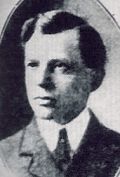Back to search results
Name: BLACKBURN, Elisha (Dr.)

Birth Date: 13.2.1873 East Carmel, Ohio
Death Date: 12.10.1958 Philadelphia
Nationality: American
First Date: 1903
Profession: Missionary, for many years for the Friends' Africa Industrial Mission, mostly in North Kavirondo
Area: North Kavirondo. 12 years at Kaimosi, Kisumu
Married: In Salem, Ohio 7 Oct 1902 Virginia Leona Hole b. 13 Oct 1873 Salem, Ohio, d. 10 Dec 1953 Worthington, Ohio. A trained nurse, she also gave devoted service to the Mission
Children: Doris Esther (Kaimosi 13.5.1904-1998); Margaret Ruth (Kaimosi 28.5.1906-17 Aug 1908); Marjorie Lois (9.5.1910 Salem, Ohio); John Hollingsworth (17 May 1913 Nairobi-2000)
Book Reference: Gillett, Kenya Diary, Borderland, EAHB 1905, Hut, North, Playne, Drumkey, Red 22, EAHB 1906, EAHB 1907, Red Book 1912, Red 19
General Information:
Kenya Diary - May 1904 - There are altogether in Kaimosi 3 American missionaries, Messrs. Hole, Blackburne and Chilson, the two former being married and having their wives with them
North - Established Quaker mission at Kaimosi in Kavirondo with wife, Edgar T. Hole and Arthur B. Chilson, Aug 1902; daughter born Kaimosi 13-5-1904
Drumkey 1909 - Friends' Africa Industrial Mission, Kaimosi - Dr. E. Blackburn and Mrs Blackburn
EAHB 1907 - Dr E. Blackburn, Kaimosi
Red Book 1912 - Dr. C. Blackburne [sic] - Kaimosi
Red Book 1919 - E. Blackburn - Kisumu
Borderland - Dr. Blackburne their medical man.
EAHB 1905 has Dr. and Mrs A. Blackburn arriving at Kaimosi in 1903
Ane Marie Bak Rasmussen, A History of the Quaker Movement in Africa, 1995 1st school set up by Hole at Kaimosi in Feb 1903. Even for the Friends, the relationship between the four departments of their work — the evangelical and the industrial together with the medical and the educational, which were soon added — was not always without problems as the work developed over the years. But from the outset, all four departments appeared necessary, and missionaries engaged in them with great energy. Willis Hotchkiss left Kaimosi after only about six months because of disagreements with the other two missionaries.° But already in that same year, in 1903, a missionary doctor, Elisha Blackburn, arrived, with his wife and Edgar Hole's wife. In 1904 Emory and Deborah Rees came, and in 1907 Edna Chilson, wife of Arthur Chilson. All these missionaries took part in all aspects of the work, but as time passed, and some kind of specialization became necessary, Arthur Chilson concentrated more and more on evangelization, while Emory Rees used a good deal of his time translating the New Testament into Luragoli together with the first African convert, Akhonya, later on with Yohana Amugune, and finally for many years with Joel Litu.61 The women missionaries were active in educational and evangelizing work among women. Meanwhile, the industrial work assumed a relatively independent position with the arrival in 1912 of Fred Hoyt, who took charge of the milling and building activities, and in 1913 of C. Frank Conover, who was an agriculturalist. Medical work was continued when Dr Archie Bond took over from Dr Blackburn in 1917, while the educational department, which at first developed alongside the evangelistic work, gradually became more and more important. In 1929 Everett Kellum arrived to supervise all Friends educational institutions. All these and other missionaries, together with their wives, took part in evangelization, and often saw their own departments as serving the overall purpose of converting the Africans to Christianity. But the two missionaries who became the most prominent preachers were Arthur Chilson and Jefferson Ford, who came to Kenya in 1914. It was Jefferson Ford who, together with Joel Litu, translated the Old Testament into Luragoli.
Back to search results

